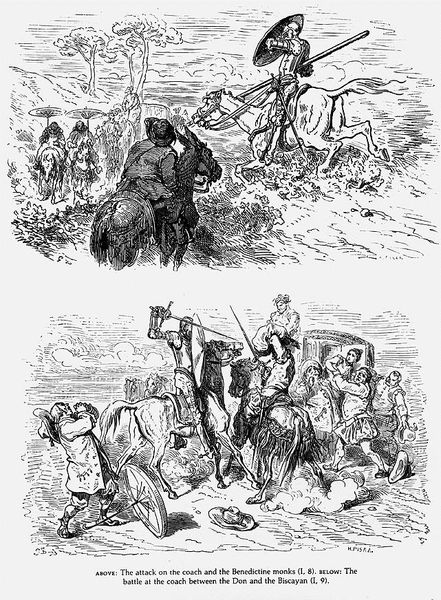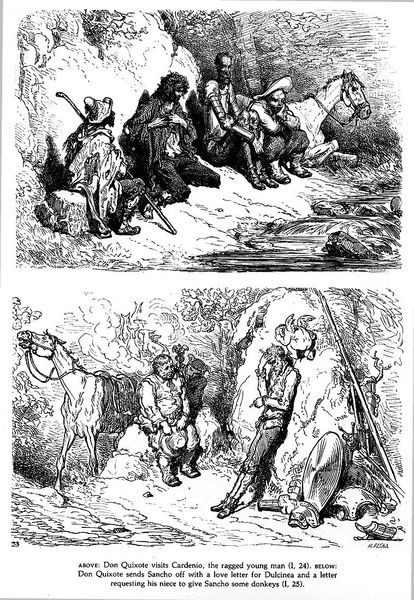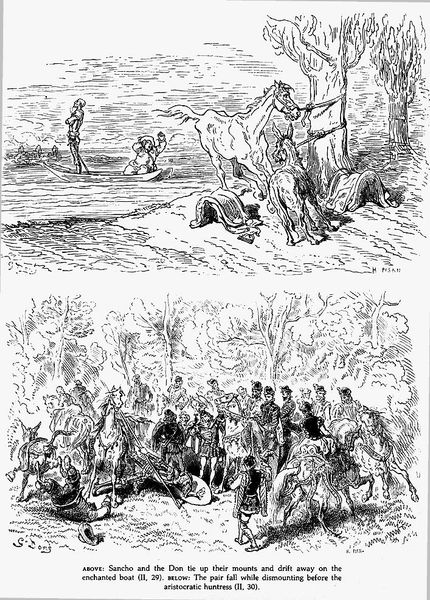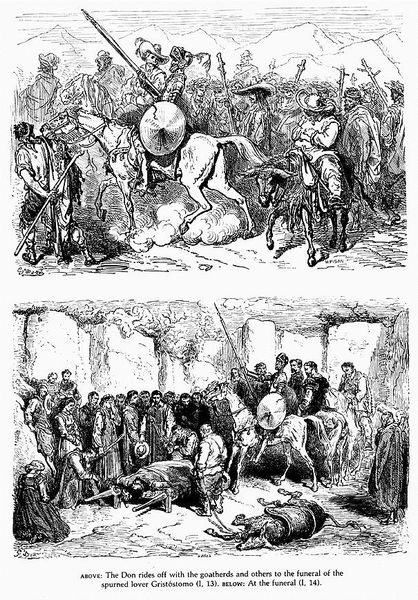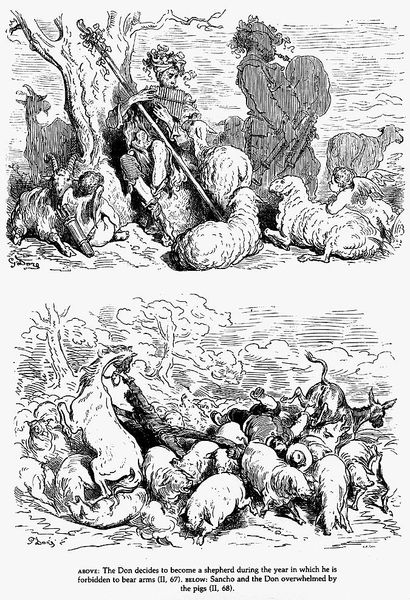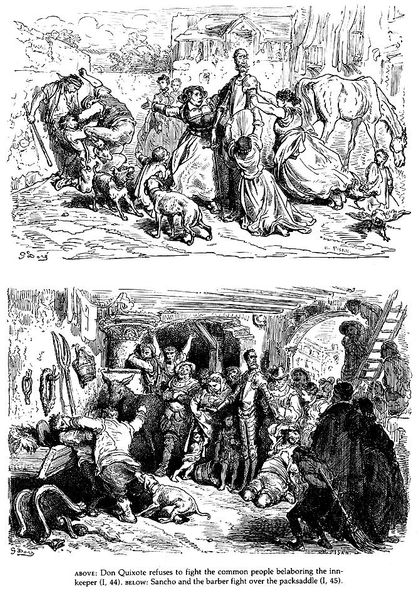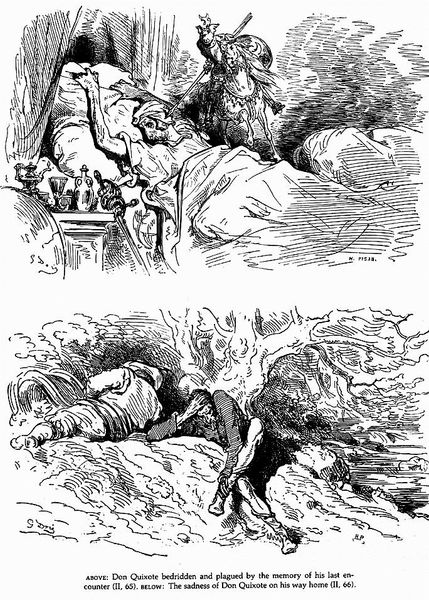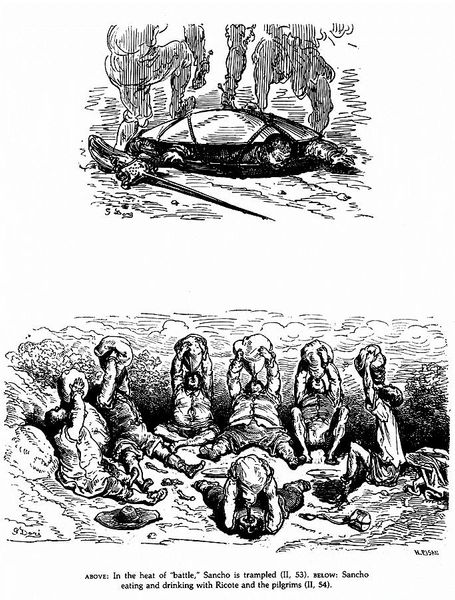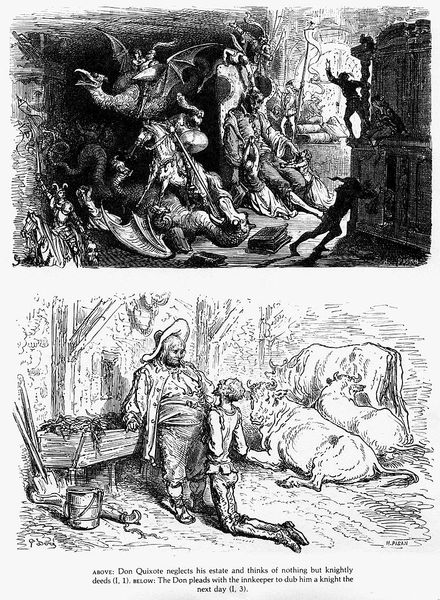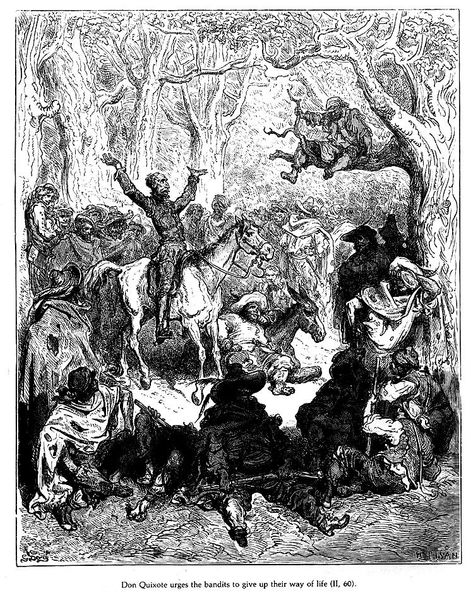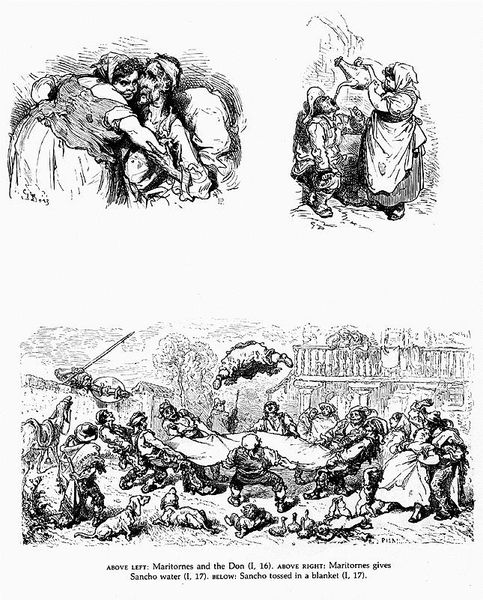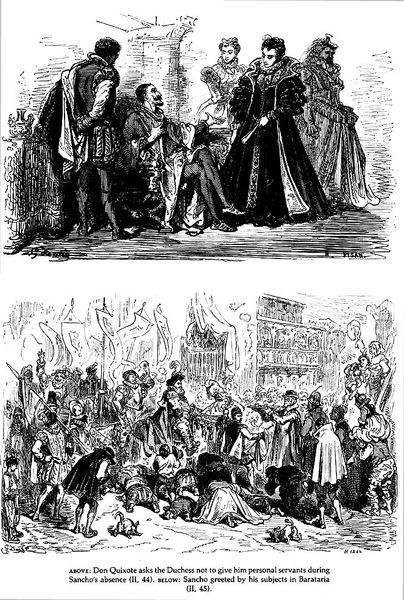
drawing, ink
#
portrait
#
drawing
#
medieval
#
narrative-art
#
landscape
#
figuration
#
ink
#
romanticism
#
line
#
history-painting
Copyright: Public domain
Curator: Take a look at this pair of drawings of Don Quixote, beautifully rendered by Gustave Dore. The detail he coaxes out of mere ink is incredible. What do you see first? Editor: Oh, the chaotic energy! It feels like a whirlwind captured in lines, particularly in that upper scene with the boar hunt. So much movement bursting from a static image. Curator: Precisely. What's striking to me is the process—Dore wasn't painting, he was illustrating. Mass reproduction was always the point here, for books primarily, which fundamentally changes the status of the art. These are images meant to circulate widely, engaging with the burgeoning literary market. Editor: So, almost functional? How does that tie in with the subject matter? Is he elevating labor by associating Don Quixote, who represents an impossible ideal, with common labor and printed matter? Curator: Well, Dore does inject the romantic spirit. I mean, look at that sweeping landscape in the top drawing! He evokes a bygone era, of chivalry and adventure. Even the second illustration with Sancho speaking to the duchess shows his attempts to embody the aristocratic social position Quixote thinks he embodies naturally. The contrast to that is clear, it sets up that tension between illusion and reality central to Cervantes. Editor: Sure, the figures are engaging, but how were these images produced at scale? The paper, the ink...those raw materials shaped how readily available Don Quixote became to the common person. Curator: True, true. His style feels particularly suited to ink. It's dramatic but allows him to retain great detail across the frame and in all levels. But don’t let’s reduce his style to its printability only, he imbues these images with pathos and a touch of humour that always tickles my senses. Editor: But is not that humour directly influenced by his engagement with that popular audience? Even his technique uses line to lead our eye where *he* wants it to go to highlight important narrative components that the common reader needs. Curator: A fascinating thought indeed. I will keep this analysis in mind as I see the show assembled.
Comments
No comments
Be the first to comment and join the conversation on the ultimate creative platform.

